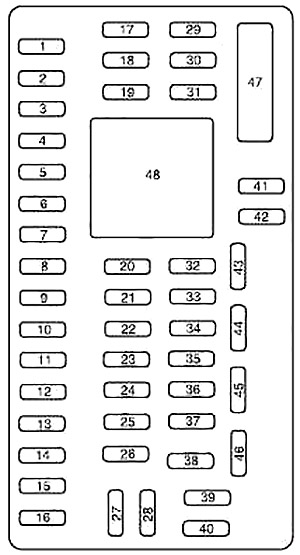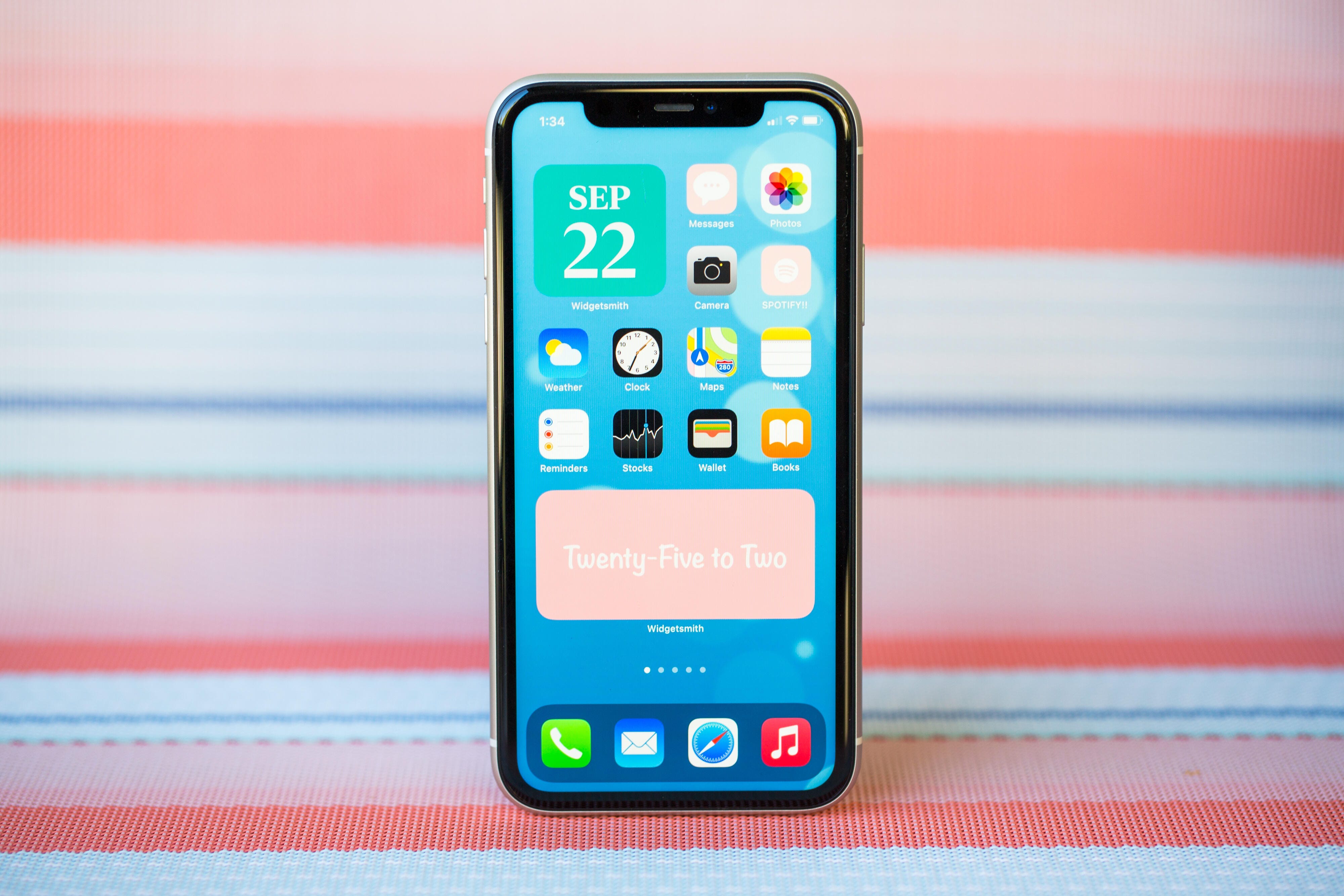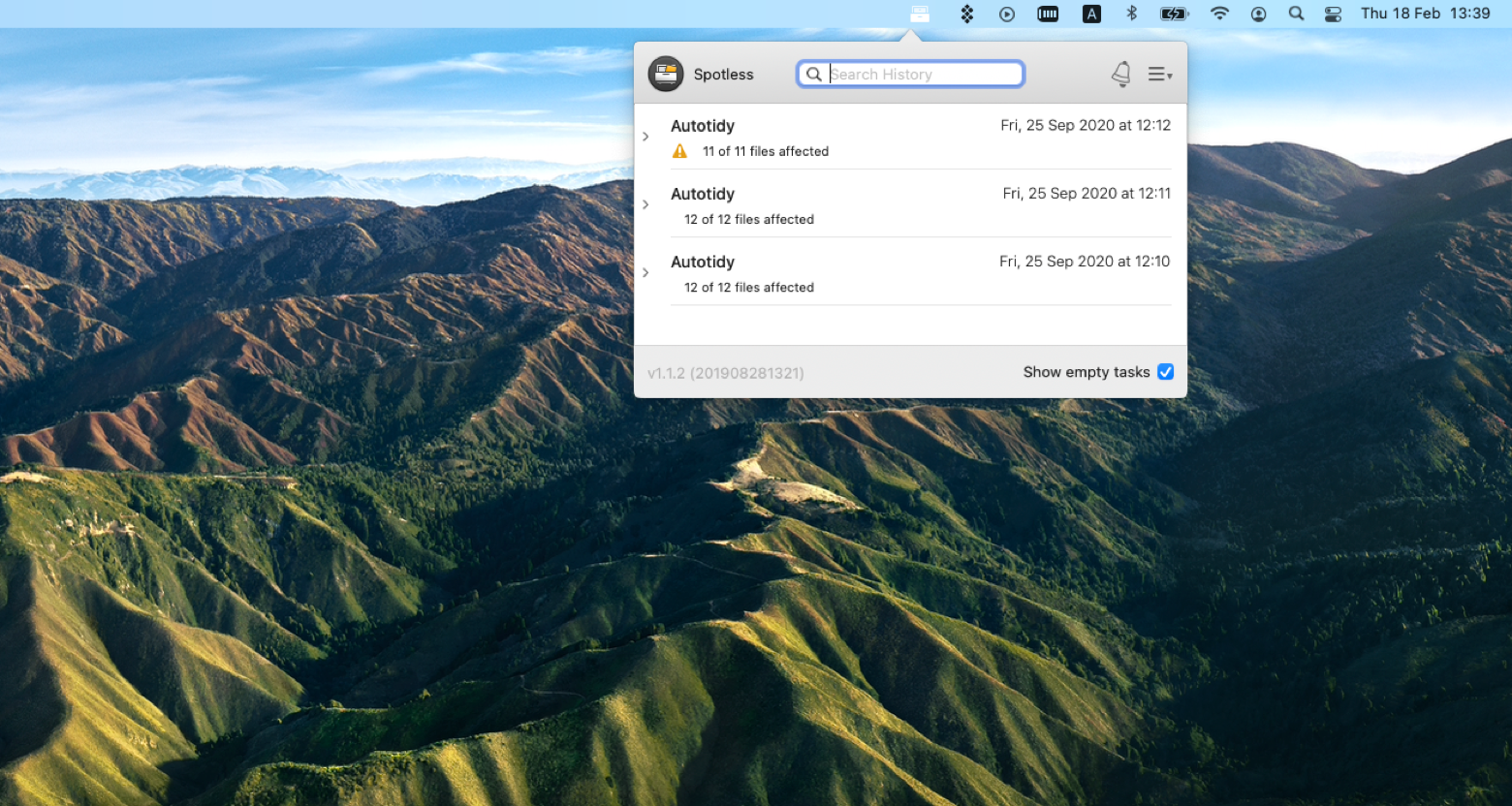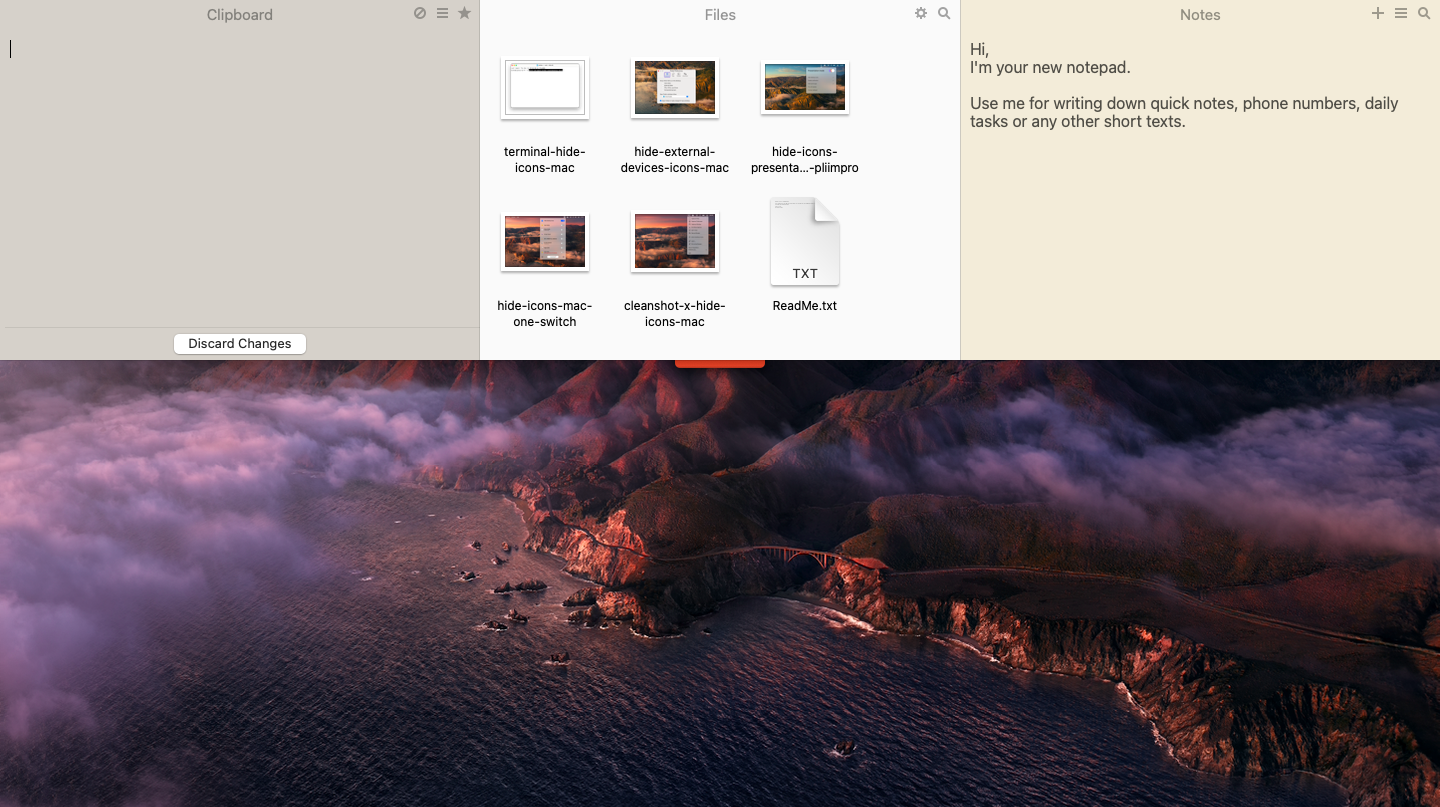Fuse box diagram (fuse layout), location and assignment of fuses and relays Ford E150, E250, E350, E450 (2009, 2010, 2011, 2012, 2013, 2014, 2015).

Checking and Replacing Fuses
Fuses and circuit breakers protect your vehicle's electrical system from overloading. If electrical parts in your vehicle are not working, the system may have been overloaded and blown a fuse or tripped a circuit breaker. Before you replace or repair any electrical parts, check the appropriate fuses or circuit breakers.
If electrical components in the vehicle are not working, a fuse may have blown. Blown fuses are identified by a broken wire within the fuse. Check the appropriate fuses before replacing any electrical components.
Notice
- Before replacing a fuse check that the key has been removed from the ignition and that all the services are switched off and/or disengaged.
- Always disconnect the battery before servicing high current fuses. If your vehicle is equipped with a dual battery, disconnecting the primary under-hood battery DOES NOT remove power from all circuits.
- Always replace a fuse with one that has the specified amperage rating. Using a fuse with a higher amperage rating can cause severe wire damage and could start a fire.
- Never replace a broken fuse with anything other than a new fuse. Use always an intact fuse of the same color.
- If a fuse blows again contact a qualified service center.
Passenger Compartment Fuse Box Diagram
The fuse panel is located to the left of the brake pedal and mounted onto the lower left cowl panel. Remove the fuse panel cover to access the fuses.
To remove a fuse use the fuse puller tool provided on the inside of the fuse panel cover.

| № | A | Protected components |
|---|---|---|
| 1 | 30 | 2013-2015: Inverter B+ |
| 2 | 15 | Not used (spare) |
| 3 | 15 | Not used (spare) |
| 4 | 30 | Not used (spare) |
| 5 | 10 | Passenger compartment fuse panel (SPDJB), Brake shift interlock |
| 6 | 20 | Turn signal, Hazard, Stop lamps |
| 7 | 10 | Left low beam |
| 8 | 10 | Right low beam |
| 9 | 15 | Courtesy lamps |
| 10 | 15 | Switch illumination |
| 11 | 10 | Not used (spare) |
| 12 | 7.5 | Not used (spare) |
| 13 | 5 | Mirrors |
| 14 | 10 | 2010-2015: SYNC, Global positioning system module |
| 15 | 10 | Not used (spare) |
| 16 | 15 | Not used (spare) |
| 17 | 20 | Door locks |
| 18 | 20 | Not used (spare) |
| 19 | 25 | Not used (spare) |
| 20 | 15 | Diagnostic connector (except stripped chassis) |
| 21 | 15 | Not used (spare) |
| 22 | 15 | Park lamps, License plate lamps |
| 23 | 15 | High beams |
| 24 | 20 | Horn (except stripped chassis) |
| 25 | 10 | Demand lighting |
| 26 | 10 | Cluster (except stripped chassis) |
| 27 | 20 | Ignition switch feed |
| 28 | 5 | Audio mute (start) |
| 29 | 5 | Cluster (except stripped chassis) |
| 30 | 5 | Not used (spare) |
| 31 | 10 | Not used (spare) |
| 32 | 10 | Restraints module |
| 33 | 10 | Trailer Brake Controller |
| 34 | 5 | Not used (spare) |
| 35 | 10 | Reverse park aid (2009-2014), Rear video camera (2009-2014), Cutaway run/start |
| 36 | 5 | Passive anti-theft system radio frequency module |
| 37 | 10 | Climate control, Stripped chassis IP #1 run/start |
| 38 | 20 | Not used (spare) |
| 39 | 20 | Radio, Navigation (2009-2014) |
| 40 | 20 | 2009-2014: Amplifier |
| 41 | 15 | Radio, Switch illumination, Reverse camera mirror, Inverter (2013-2015) |
| 42 | 10 | Upfitter switch |
| 43 | 10 | Overhead console, Stripped chassis IP1 |
| 44 | 10 | Auxiliary battery relay/Trailer tow battery charger relay |
| 45 | 5 | Wipers, Stripped chassis Engine connector 3 |
| 46 | 7.5 | Passenger airbag deactivation indicator |
| 47 | 30 | Circuit breaker: Windows accessory delay |
| | ||
| 48 | Delayed accessory | |
Engine Compartment Fuse Box Diagram
The power distribution box is located in the engine compartment. The power distribution box contains high-current fuses that protect your vehicle's main electrical systems from overloads.

| № | A | Protected components |
|---|---|---|
| 11 | — | Not used |
| 12 | 40 | Modified vehicle and stripped chassis run/start |
| 13 | 30 | Starter solenoid relay |
| 14 | 40 | Run start relay |
| 15 | 40 | Modified vehicle and stripped chassis battery |
| 16 | 50 | Auxiliary A/C blower |
| 17 | 50 | Auxiliary battery feed (2009-2010), Trailer tow battery charge, trailer tow park feed |
| 18 | 30 | Electric trailer brake, Trailer brake controller |
| 19 | 30 | Upfitter #1 |
| 20 | 30 | Upfitter #2 |
| 21 | 50 | 2009-2010: IDM relay/FICM relay (diesel engine only) |
| 22 | — | Not used |
| 26 | — | Not used |
| 27 | — | Not used |
| 28 | 20 | Back up lamp |
| 29 | 10 | A/C clutch |
| 30 | 10 | Brake on/off switch |
| 31 | 10 | Cluster battery (stripped chassis only), IDM/FICM coil (diesel engine only (2009-2010)) |
| 32 | 50 | Blower motor |
| 33 | 40 | ABS pump |
| 34 | 20 | Stripped chassis horn |
| 35 | 40 | Powertrain control module (PCM) relay |
| 36 | 20 | Ignition switch (Stripped chassis only) |
| 41 | 10 | 2009-2010: Charging (diesel engine only) |
| 42 | 15 | Diagnostic connector (stripped chassis) |
| 43 | 20 | Fuel pump |
| 44 | 10 | Upfitter #3 |
| 45 | 15 | Upfitter #4 |
| 46 | 10 | PCM keep alive power, Canister vent, PCM relay coil |
| 47 | 40 | ABS coil |
| 48 | 20 | Trailer tow stop lamp/turn signal |
| 49 | 30 | Wiper motor |
| 50 | — | Not used |
| 51 | 20 | Cutaway |
| 52 | 10 | Stripped chassis and modified vehicle run/start relay coil |
| 53 | 10 | ABS run/start feed |
| 54 | 10 | Fuel pump relay coil |
| 55 | 10 | 2009-2010: ECM/PCM (diesel engine only) |
| 56 | 20 | 2009-2010: Diesel fuel conditioner module (DFCM) (diesel engine only) |
| 57 | 20 | Trailer tow park lamp |
| 58 | 15 | Trailer tow backup lamp |
| 59 | — | Not used |
| 63 | 30 | Trailer tow battery charge |
| 64 | — | Not used |
| 65 | 20 | Power point 2 (glove box) |
| 66 | 20 | Power point 3 (left-hand B-pillar) |
| 67 | 20 | Power point 1 (instrument panel) |
| 68 | 50 | Modified vehicle |
| 69 | — | Not used |
| 70 | 30 | Stripped chassis |
| 71 | — | Not used |
| 72 | 20 | Cigar lighter / Power point |
| 73 | — | Not used |
| 74 | 30 | Power seat |
| 75 | 20 | Vehicle power 1, Powertrain control module power |
| 76 | 20 | Vehicle power 2, Powertrain control module – emission related powertrain components |
| 77 | 10 | Vehicle power 3, Powertrain control module – general powertrain components |
| 78 | 15 | Vehicle power 4, Fuel pump relay coil, Ignition coil (diesel engine only (2009-2010)) |
| 79 | 10 | Vehicle power 5, Transmission |
| 80 | 10 | Cluster run/start (stripped chassis only) |
| 81 | 15 | IDM logic (diesel engine only) |
| 82 | — | Not used |
| 83 | — | (diode) |
| 84 | — | Not used |
| | ||
| 60 | One Touch Integrated Start (OTIS) | |
| 61 | 2009-2011: Auxiliary battery | |
| 83 | Fuel pump | |
| | ||
| 1 | Powertrain Control Module (PCM) | |
| 2 | Starter solenoid | |
| 3 | Wiper | |
| 4 | Trailer tow battery charge | |
| 5 | Fuel pump | |
| 6 | Trailer tow park lamp | |
| 7 | Upfitter #4 | |
| 8 | Upfitter #3 | |
| 9 | Modified vehicle and stripped chassis run/start | |
| 10 | 2009-2010: Fuel injector control module (FICM)/(IDM) (Diesel engine only) | |
| 23 | A/C clutch | |
| 24 | Horn relay (Stripped chassis) | |
| 25 | Run/start | |
| 37 | Trailer tow stop/LH turn signal | |
| 38 | Trailer tow stop/RH turn signal | |
| 39 | Back up lamp | |
| 40 | Blower motor | |
| 62 | Upfitter #2 | |
| 85 | Upfitter #1 | |











